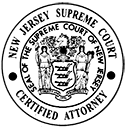7.30 Comparative Negligence (Auto) – All Issues
SUGGESTED CHECK LIST
Contentions
Functions of Judge and Jury
Comments of Court and Counsel
Determination Based on Evidence
Combined Burden of Proof (7.30A)
- Preponderance
Credible Evidence (7.30B)
- Witnesses and their Credibility
- Expert (If Applicable>
- False in One, False in All (If Applicable)
Comnined Definition of Negligence (7.30C)
- Foreseeability (if Necessary Only
Proximate Cause (7.30D)
- General Duty of Driver (If Applicable)
Comparative Negligence – Liability (7.30E)
- Introduction
- Order of Deliberation
Comparative Negligence – Damages (7.30F)
- Introduction
- Damages Must be Proximately Caused
– Rules of Damages (Insert All Appropriate Items of Damage)
– Damages – Effect of Instructions - Order of Deliberations
Verdict
Closing
Sample Jury Verdict Form (7.30G)
- Combined Burden Of Proof
Now where, as here, a plaintiff seeks to prove liability as to defendant, it is the plaintiff’s burden to prove the negligence of the defendant by a preponderance or greater weight of the credible evidence. He/She must prove not only that defendant was negligent, but that such negligence was a proximate cause of the accident.
The mere happening of an accident itself provides no basis for liability; liability in this case must be proven.
Because defendant has charged the plaintiff with negligence, it is his/her burden to prove that plaintiff was negligent and that such negligence was a proximate cause of the accident. Defendant also must prove his/her charge by a preponderance or greater weight of the credible evidence. - Credible Evidence
Credible evidence means evidence which in the light of reason and common sense is worthy of belief. In order to be believed, testimony should not only proceed from the mouth of credible witnesses but it also must be credible in itself. It must be such that the common experience of men and women can approve as probable in the circumstances.
Proof of “possibility” as distinguished from “probability” is not enough.
It follows, therefore, that if the evidence is in equal balance, the party who has the burden of proof with respect thereto has not sustained that burden.
The right of each party to have the other party bear the required burden is a substantial one and not a mere matter of form. - Combined Definition of Negligence
Negligence is defined as a failure to exercise in the given circumstances that degree of care for the safety of others which a reasonably prudent person would exercise under the same or similar circumstances. Negligence may be the doing of an act which the reasonably prudent person would not have done, or it may be the failure to do that which the reasonably prudent person would have done under the circumstances then existing. Negligence is a departure from that standard of care.
By a “reasonably prudent person” it is meant not the most cautious person nor one who is unusually bold, but rather a person of reasonable caution and prudence.
Thus, each party in this case was required to exercise the foresight, the prudence and the caution which a reasonably prudent person would exercise under the same or similar circumstances. You must determine whether each party in this case has conformed to or departed from the standard of care. - Proximate Cause
Each party must not only prove the negligence of the other party by preponderance or greater weight of the credible evidence, but also that this negligence was a proximate cause of the accident.
By proximate cause it is meant that the negligent conduct of a party was an efficient cause of the accident, that it necessarily set the other causes in motion and naturally and probably led to the accident in question. - Comparative Negligence — Liability
- Introduction
If you find that more than one party has established his/her burden of proof as to negligence, as defined by the court, you must then compare the negligence of those parties. The total amount of negligence is 100%. The figure that you arrive at should reflect the total percentage of negligence attributed to each party with respect to the happening of the accident. A comparison of negligence is made only if the negligence of more than one party proximately caused the accident. - Order of Deliberation
A jury verdict form has been prepared and will now be distributed to you so that you may follow the court’s instructions with respect thereto. When completed this will be your verdict in this case.
Question No. 1 reads:
Was defendant ______________ negligent, which negligence was a proximate cause of the accident?
Yes ____ No ____
If you find that defendant was negligent and that this negligence was a proximate cause of the accident, mark “Yes” as to Question No. 1 and proceed to Question No. 2. If you find to the contrary, mark “No” as your answer, cease deliberations and return your verdict.
Question No. 2 reads:
Was plaintiff ______________ negligent, which negligence was a proximate cause of the accident?
Yes ____ No ____
If you find that plaintiff was negligent and that the negligence was a proximate cause of the accident, mark “Yes” as your answer and proceed to Question No. 3. If you find to the contrary, mark “No” as your answer and proceed to Question No. 4 on damages.
Question No. 3 reads:
Defendant ___________%
Plaintiff ___________%
Total 100 %
This question asks you to compare the negligence of each party with respect to the happening of the accident, which should be reflected in a percentage figure ranging from 1% to 99%. The combined negligence of all parties shall total 100%. This question is only to be answered where the answer to both Question No. 1 and No. 2 is “Yes”. When you arrive at the appropriate figure, mark your verdict form and proceed to Question No. 4 on damages.
- Introduction
- Comparative Negligence – Damages
- Introduction
If you determine that defendant was solely negligent or that both parties were negligent, it then becomes your duty to determine the amount of money, if any, to be awarded to plaintiff(s). For that reason, I will now instruct you with respect to the measure of damages in this case in the event that you need to consider this question. - Damages Must Be Proximately Caused
It is the duty of the plaintiff to prove by preponderance or the greater weight of the credible evidence that the injuries and damages for which compensation is sought proximately resulted from the accident. It is not enough for a plaintiff to prove a mere possibility that a particular injury or claimed item of damage resulted from the accident. Speculation is not enough. It must be shown that the injury or damage was the natural and probable consequence of the accident. - Order of Deliberation
I now refer you back to your jury verdict form.
Question No. 4 reads:
Damages to plaintiff: $__________________
After considering the evidence relating to the plaintiff’s injuries and their consequences, you will determine what amount of money would fairly and reasonably compensate plaintiff for his/her injuries and losses proximately resulting from the accident and state the dollar amount as your answer to Question No. 4 in one lump sum. The evaluation of plaintiff’s injuries and damages should be made irrespective as to which party is at fault or to what degree or who is ultimately to pay. You are to be concerned only with evaluating the plaintiff’s injuries and damages without regard to whose fault proximately caused them.
- Introduction
- Sample Jury Verdict Form
- Was defendant _____________ negligent, which negligence was a proximate cause of the accident?
Yes ____ No ____
If “Yes” proceed to Question No. 2.
If “No” cease deliberations and return your verdict. - Was plaintiff ______________ negligent, which negligence was a proximate cause of the accident?
Yes ____ No ____
If “Yes” proceed to Question No. 3 and No. 4.
If “No” proceed directly to Question No. 4. - Comparison of each party’s negligence — to be answered only if answers to Questions No. 1 and No. 2 are “Yes”.
Defendant ___________%
Plaintiff ___________%
Total 100 %
- Was defendant _____________ negligent, which negligence was a proximate cause of the accident?



